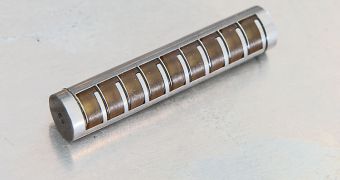A collaboration of researchers in the United States has recently finished developing a new thermal control system for electronics that will enable future devices to exceed current heat limitations.
When devising an electronic circuit, the golden rule is that increased complexity requires more electricity to operate. In turn, this means that the device will generate more heat, which underlies a greater chance of the electronics frying.
In order to prevent this from happening, experts use various methods of thermal control. In space however, doing so is tremendously difficult because there's no air that can be circulated over the circuits, in order to cool them.
But scientists have now finally managed to overcome this limitation, thanks to the collaborative efforts of NASA Goddard Space Flight Center (GSFC) thermal engineer Jeffrey Didion, and Illinois Institute of Technology (IIT) professor Dr. Jamal Seyed-Yagoobi.
Under a technical partnership with the US Air Force (USAF) and the National Renewable Energy Laboratory (NREL), the team managed to create the new electrohydrodynamic (EHD)-based thermal control technology.
Its main role is to allow for heat to be removed more easily from small spaces, which are particularly hard to cool. This could benefit space exploration a great deal, the team adds.
“Today, higher-power computer chips are available, but they generate too much heat. If I can carry away more heat, engineers will be able to use higher-power components. In other words, they will be able to do more things,” Didion explains.
He is the leader of the technology-development efforts at GSFC, that also involve Matthew Showalter. The latter is the associate branch chief of the GSFC Advanced Manufacturing Branch. Edge Space Systems engineer Mario Martins is also collaborating with the team.
“Any electronic device that generates a lot of heat is going to benefit from this technology,” adds the assistant chief for technology at the GSFC Mechanical Systems Division, Ted Swanson.
“The advantages are many. Without mechanical parts, the system is lighter and consumes less power, roughly half a watt,” Didion explains.
“But perhaps more importantly, the system can be scaled to different sizes, from larger cold plates to microscale electronic components and lab-on-a-chip devices,” the expert concludes.

 14 DAY TRIAL //
14 DAY TRIAL //